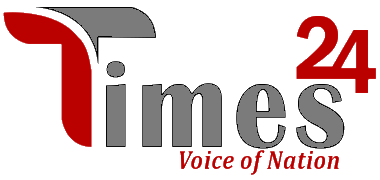Unlocking the Power of SOC 2: How SOC 2 Report Enhance Trust and Security: It is impossible to exaggerate the value of security and trust. Strong assurance systems are essential as enterprises depend more on third-party service providers to handle sensitive data and crucial processes.
One such mechanism is the System and Organization Controls 2 (SOC 2) report, a framework designed to assess and enhance trust and security. In this article, we delve into the significance of SOC 2 and explore how it unlocks the power of trust and security in a data-driven world.
The Key Components of a SOC 2 Report
Here are the key components of a SOC 2 report, focusing on two critical aspects: the criteria for evaluating trust and security and the role of auditors.
Criteria for Evaluating Trust and Security
Here are the criteria for evaluating trust and security:
- Trust Service Principles (TSP): SOC 2 is based on five TSPs – Security, Availability, Processing Integrity, Confidentiality, and Privacy. These principles serve as the foundation for evaluating a service organization’s controls.
- Control Objectives: Within each TSP, specific control objectives define the desired outcomes. These objectives guide the evaluation of control activities and are tailored to the organization’s specific industry and needs.
- Control Activities: To achieve the control objectives, service organizations perform control actions. The security and dependability of the services offered are actually ensured by these rules, methods, and practices.
Role of Auditors
- Independent Assessment: Auditors, often third-party firms, conduct independent assessments of a service organization’s controls. They evaluate whether the controls in place effectively meet the defined criteria.
- Audit Procedures: Auditors perform various audit procedures, including interviews, document reviews, and testing of control activities. This rigorous process helps ensure that the controls are operating effectively.
- Reporting: Auditors issue a SOC 2 report after the assessment. This report contains vital information for service users, including management’s description of the system, the auditor’s opinion, and details about the effectiveness of the controls.
Enhancing Trust Through SOC 2
In the realm of data security and privacy, SOC 2 compliance holds a significant role. There are two primary aspects to consider when discussing SOC 2: the benefits it offers and its impact on building customer confidence.
A. Benefits of SOC 2 Compliance:
SOC 2 compliance provides organizations with a structured framework for enhancing their security and confidentiality measures.
It fosters trust by ensuring the protection of sensitive information, thereby reducing data breaches and related risks.
It also aids in streamlining internal processes and meeting regulatory requirements, making businesses more robust and resilient.
B. Building Customer Confidence:
SOC 2 compliance demonstrates a company’s commitment to safeguarding customer data.
By adhering to SOC 2 standards, organizations can assure their clients that their information is in safe hands.
This not only builds trust but can also attract new customers who prioritize security and data protection when choosing their service providers.
In addition to SOC 2 compliance, there are various types of SOC reports, such as SOC 1 and SOC 3, each tailored to specific aspects of an organization’s controls and processes.
Strengthening Security with SOC 2
This is how security controls and risk management are essential aspects of SOC 2 compliance and collectively boost an organization’s security.
Security Controls and SOC 2
Security controls are measures to safeguard data and systems. SOC 2 focuses on five trust service criteria, and organizations must establish these controls for compliance.
- Security Policies: SOC 2 requires robust security policies and procedures to address potential risks.
- Access Controls: Stringent controls limit system and data access, involving user authentication and authorization.
- Encryption: Data encryption at rest and in transit protects information from unauthorized access.
- Monitoring and Response: Continuous monitoring and incident response plans are vital for addressing security breaches.
Managing Risk Effectively
Effective risk management is fundamental for security. SOC 2 complements security controls by promoting a risk-aware culture.
- Risk Assessment: SOC 2 mandates thorough risk assessments to identify security and privacy risks, prioritizing resource allocation.
- Remediation: Vulnerabilities identified through assessments must be mitigated through a remediation process for compliance.
- Third-Party Vendors: SOC 2 evaluates vendor risk management, ensuring they meet security and compliance standards.
- Ongoing Compliance: SOC 2 encourages continuous adaptation of security controls and risk management strategies to address evolving threats.
The Future of Trust and Security
The future of trust and security is being shaped by two key factors:
- Evolving SOC 2 Standards: SOC 2 (System and Organization Controls 2) standards are continuously evolving to adapt to the changing landscape of technology and data security.
These standards are crucial for organizations to demonstrate their commitment to data protection and privacy.
The future will see SOC 2 standards becoming more comprehensive and flexible, allowing companies to address emerging threats and risks.
- Trends in Security Assurance: As technology advances, so do the methods and tools used by cybercriminals. Practices for security assurance will continuously changing to stay up with these threats.
This entails the use of cutting-edge technology for improved security, such as blockchain and artificial intelligence, as well as a rising focus on proactive threat detection and response.
The combination of evolving SOC 2 standards and emerging trends in security assurance will be instrumental in building and maintaining trust in an increasingly interconnected and digital world.
Conclusion
In conclusion, the SOC 2 report is a vital tool for organizations seeking to enhance trust and security in a data-driven world.
Its comprehensive framework, including Trust Service Principles, Control Objectives, and Control Activities, plays a pivotal role in ensuring the protection of sensitive data and building customer confidence.
By promoting security controls and effective risk management, SOC 2 compliance strengthens an organization’s security posture.
As SOC 2 standards evolve and security assurance practices adapt to emerging threats, the future holds promise for even more robust trust and security in our interconnected digital landscape.
Also Read: How Does Crypto Mining Work?
Latest News and updates, Follow and connect with us on Facebook, Twitter, and Linkedin.
Get the latest updates directly on your mobile, save and send a message at +91-9899909957 on Whatsapp to start.





